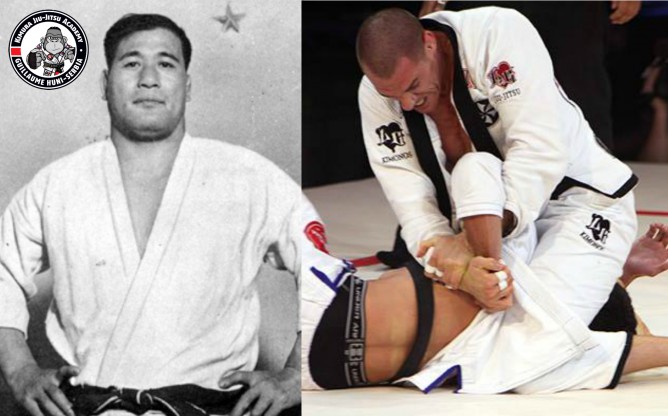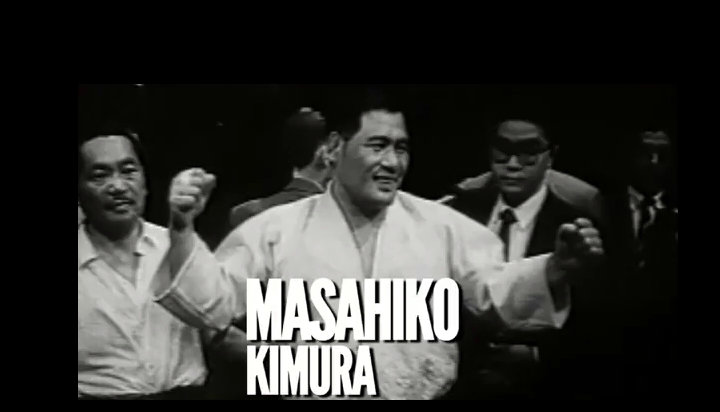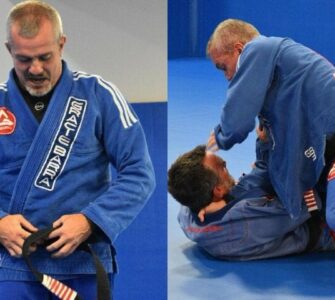Masahiko Kimura)was a Japanese judoka who is widely considered one of the greatest judoka of all time. (5 ft 7in 170 cm; 85 kg, 187 lb) He was born on September 10, 1917 in Kumamoto, Japan. In submission grappling, the reverse ude-garami arm lock is often called the “Kimura”, due to his famous victory over Gracie jiu-jitsu developer Hélio Gracie.
Masahiko Kimura began training Judo at age of 9 and was promoted to yondan (4th dan) at the age of 15 after six years of Judo. He had defeated six opponents (who were all 3rd and 4th dan) in a row. In 1935 at age 18 he became the youngest ever godan (5th degree black belt) when he defeated eight consecutive opponents at Kodokan (headquarters for the main governing body of Judo).
Kimura’s remarkable success can in part be attributed to his fanatical training regimen, managed by his teacher, Tatsukuma Ushijima. Kimura reportedly lost only four judo matches in his lifetime, all occurring in 1935. He considered quitting judo after those losses, but through the encouragement of friends he began training again. He consistently practiced the leg throw osoto gari (large outer reap) against a tree. Daily randori or sparring sessions at Tokyo Police and Kodokan dojos resulted in numerous opponents suffering from concussions and losing consciousness. Many opponents asked Kimura not to use his osoto gari.
At the height of his career Kimura’s training involved a thousand push-ups and nine-hours practice every day. He was promoted to 7th dan at age 30, a rank that was frozen after disputes with Kodokan over becoming a professional wrestler, refusing to return the All Japan Judo Championship flag, and issuing dan ranks while in Brazil.
Mas Oyama himself said that the ONLY person who trained as hard as he did… or in-fact, harder than he did, was the one and only: Masahiko Kimura…
Kimura vs. Hélio Gracie
In 1949, after winning multiple fights against boxers, wrestlers and Savate fighters in Europe, Kimura decided to go to Brazil after an invitation by Helio Gracie. Helio Gracie issued a challenge to Kimura.[8] An agreement was made under what would be known as the “Gracie Rules” via the Gracie Challenge that throws and pins would NOT count towards victory only submission or loss of consciousness.[8] This played against Judo rules in which Pins and throws can award someone a victory.[9] In 1951, Kimura defeated Hélio Gracie of the Gracie Jiu Jitsu family in a submission Judo match held in Brazil.[10] During the fight Kimura threw Gracie repeatedly with Ippon Seoinage (one arm shoulder throw), Ouchi Gari (major inner reap), Uchimata (inner thigh throw), Harai Goshi (sweeping hip throw), and Osoto Gari (major outer reap). However, Helio Gracie was able to perform ukemi, as demonstrated by his earlier match with Kimura’s fellow judoka Kato, was in excellent condition, benefited from the soft mat used in competition, and showed a strong will to win and refusal to lose – he was undeterred.[11] Unable to subdue Helio through throwing alone, the fight progressed into groundwork. Kimura maintained a dominance in the fight at this point by using techniques such as kuzure-kamishiho-gatame (modified upper four corner hold), kesa-gatame (scarf hold), and sankaku-jime (triangle choke). Thirteen minutes into the bout Kimura positioned himself to apply a reverse ude-garami (arm entanglement, a shoulderlock). Gracie did not submit to this technique which resulted in Helio’s corner throwing in the towel.
In a 1994 interview with Yoshinori Nishi, Helio Gracie admitted that he had been rendered unconscious very early in the bout by a body vise although Kimura released the hold and continued the bout.[citation needed]
As a tribute to Kimura’s victory, the reverse ude-garami technique he used to defeat Gracie has since been commonly referred to as the Kimura lock, or simply the Kimura, in Brazilian Jiu-Jitsu and, more recently, mixed martial arts circles.

Kimura describes the event as follows:
20,000 people came to see the bout including President of Brazil. Helio was 180cm [5’11”] and 80 kg [176#]. When I entered the stadium, I found a coffin. I asked what it was. I was told, “This is for Kimura. Helio brought this in.” It was so funny that I almost burst into laughter. As I approached the ring, raw eggs were thrown at me. The gong rang. Helio grabbed me in both lapels, and attacked me with O-soto-gari and Kouchi-gari. But they did not move me at all. Now it’s my turn. I blew him away up in the air by O-uchi-gari, Harai-goshi, Uchimata, Ippon-seoi. At about 10 minute mark, I threw him by O-soto-gari. I intended to cause a concussion. But since the mat was so soft that it did not have much impact on him. While continuing to throw him, I was thinking of a finishing method. I threw him by O-soto-gari again. As soon as Helio fell, I pinned him by Kuzure-kami-shiho-gatame. I held still for 2 or 3 minutes, and then tried to smother him by belly. Helio shook his head trying to breathe. He could not take it any longer, and tried to push up my body extending his left arm. That moment, I grabbed his left wrist with my right hand, and twisted up his arm. I applied Udegarami. I thought he would surrender immediately. But Helio would not tap the mat. I had no choice but keep on twisting the arm. The stadium became quiet. The bone of his arm was coming close to the breaking point. Finally, the sound of bone breaking echoed throughout the stadium. Helio still did not surrender. His left arm was already powerless. Under this rule, I had no choice but twist the arm again. There was plenty of time left. I twisted the left arm again. Another bone was broken. Helio still did not tap. When I tried to twist the arm once more, a white towel was thrown in. I won by TKO. My hand was raised high. Japanese Brazilians rushed into the ring and tossed me up in the air. On the other hand, Helio let his left arm hang and looked very sad withstanding the pain.
Masahiko Kimura’s Daily Training Regime (Kimura trained 6 days a week):
1,000 Push-ups or Hindu Push-ups
Bunny Hop- 1 km
Headstand- 3 x 3 Minutes (against a wall)
Judo Practice- 100 Throws
One-Arm Barbell Lift and Press- 15 Reps each side OR Bench Press- 3 Sets: 3, 2, and 1 Reps
200 Sit-ups off Partner’s Back or Decline Sit-ups
200 Squats with Partner/Log/Barbell/Sandbag (150-200lbs)
Judo Practice- 100 Drills Submissions
500 Shuto (Knife-hand Strikes)
Judo Practice- 100 Entries
Judo Randori- “X” x 3 Minute Rounds
Practice Throws (particularly Uchi-mata) Against a Tree- 1 Hour
Additional Judo Practice- 1 Hour
Masahiko Kimura demonstrating judo techniques.He was over 60 that time, still in good shape.:
Sources of this article:
http://real-anime-training.blogspot.com/2013/04/judo-in-anime-and-manga-masahiko.html
http://en.wikipedia.org/wiki/Masahiko_Kimura

















